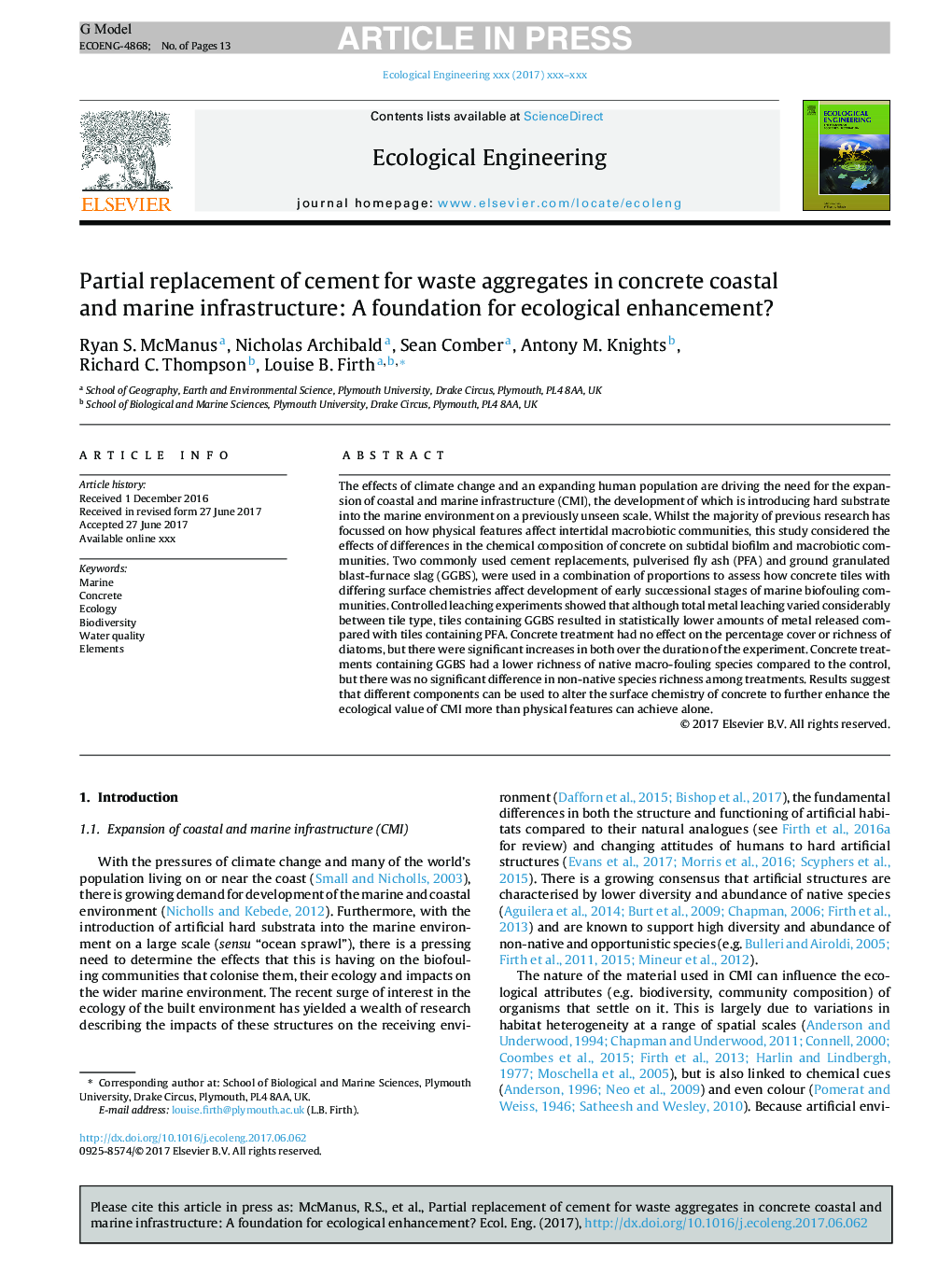| Article ID | Journal | Published Year | Pages | File Type |
|---|---|---|---|---|
| 10110152 | Ecological Engineering | 2018 | 13 Pages |
Abstract
The effects of climate change and an expanding human population are driving the need for the expansion of coastal and marine infrastructure (CMI), the development of which is introducing hard substrate into the marine environment on a previously unseen scale. Whilst the majority of previous research has focussed on how physical features affect intertidal macrobiotic communities, this study considered the effects of differences in the chemical composition of concrete on subtidal biofilm and macrobiotic communities. Two commonly used cement replacements, pulverised fly ash (PFA) and ground granulated blast-furnace slag (GGBS), were used in a combination of proportions to assess how concrete tiles with differing surface chemistries affect development of early successional stages of marine biofouling communities. Controlled leaching experiments showed that although total metal leaching varied considerably between tile type, tiles containing GGBS resulted in statistically lower amounts of metal released compared with tiles containing PFA. Concrete treatment had no effect on the percentage cover or richness of diatoms, but there were significant increases in both over the duration of the experiment. Concrete treatments containing GGBS had a lower richness of native macro-fouling species compared to the control, but there was no significant difference in non-native species richness among treatments. Results suggest that different components can be used to alter the surface chemistry of concrete to further enhance the ecological value of CMI more than physical features can achieve alone.
Related Topics
Life Sciences
Agricultural and Biological Sciences
Ecology, Evolution, Behavior and Systematics
Authors
Ryan S. McManus, Nicholas Archibald, Sean Comber, Antony M. Knights, Richard C. Thompson, Louise B. Firth,
